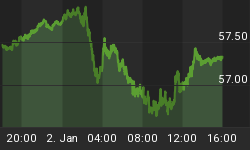Investors rely on indices to help understand how a market is moving, and perhaps even how it might move in the future. Technical analysis of a market, for example, is only possible due to market indices. How else would we assess what might be happening in a market? If an index is not properly constructed, that whole effort may prove fruitless.
Indices must adapt and change to accommodate the economic evolution that takes place in the market. The Dow Jones Industrial Average bears no resemblance to the first Dow average which was created more than 100 years ago. Due to the inadequacies inherent to the mathematics of that average, market weighted indices were created. The well-known S&P 500 being the best example.
The first step in using any index is a review of the construction of the index. What is included in the index is obviously important.Equally important, and perhaps a more serious concern, is what is excluded from the index. Investors should be aware that the name of the index may or may not accurately reflect what it is the index measures. A cursory review of many indices will find that few adequately measure the market with which they are associated by their names.
As we are interested in Gold, the comments which follow relate to a popular dollar index. Note that we have not chosen this index for a vindictive reason. Rather, it was chosen due to popularity and ease of understanding. The comments that follow are generally applicable to other dollar indices. In short, nearly all dollar indices are inadequately constructed and are therefore of little analytical value. Due to inadequacies in their construction they likely tell us little or nothing about the future for Gold.
An index to be useful should have two characteristics: depth and timeliness. It should be sufficiently broad as to create a reasonable approximation of what a market might be doing. It should evolve over time to include changes taking place in the market. Of the 30 stocks in the Dow Jones Industrial Average, for example, only 6 have been in that average for more than 40 years.
A popular dollar index is the USDX produced by ICE. Per the web site of that exchange,
"The USDX is quite unique among currency indices in its fixed composition. It has changed once since its 1973 introduction, and that was when the euro was launched in January 1999, replacing a number of European currencies. The net representation of the European legacy currencies in the USDX remained fixed at 57.6%." (theice.com, 20 May 2013)
Rarely do we read of market research that brags about having not changed or adapted its methodology in 40 years. In short, this index assumes that the global economic system is today as it was 40 years. On this basis any such index fails to meet an important criterion, timeliness. The only change that occurred in this index was forced upon it when the Euro replaced the former European currencies.

Chart to the right comes from the ICE web site. In it are listed the currencies that compose this index. Note per the above that the composition has not changed in 40 years.
While the British Pound, Swedish krona, and Swiss franc are indeed unique currencies issued by sovereign governments, the economies of those nations are not independent of the European economy. In reality, 77.3% of the value of this index is determined by Europe. That is hardly a representative sample of the world's economy today. And we must ask, when was the last time you used Swedish krona?
What is not included in, or excluded from, an index is equally important. All of the currencies of Latin America are excluded. With the exception of the Japanese yen, all Asian currencies are excluded. Where are India and Russia? Africa does not exist per most of these indices.
Perhaps the most shocking exclusion from dollar indices is the Chinese Renminbi. China surpassed the U.S. to become the largest global trading nation, imports plus exports, in 2012.(bloomberg.com, 9 February) But yet, this dollar index has 77% exposure to the European economy, and zero(0%) to the Chinese economy. Some justification should be available for such a questionable design feature.

Second chart on this page portrays the dollar value of the Chinese Renminbi over the past 2+ years. The readily apparent appreciation of the Renminbi, depreciation of the U.S. dollar, has been excluded from most dollar indices. That exclusion of the Chinese Renminbi suggests that the such indices may not have adequately portrayed the value of the dollar in recent times.
That reality leads to some questions. How long can these researchers ignore the Chinese economy? What justification exists to exclude the currency of what is becoming the most important economy in the world? How can researchers use indices with such deficiencies to predict the future price of Gold?
Based on the inclusions and exclusions in dollar indices we would have to question their usefulness. Any claim that these indices reflect a reasonable measure of the value of the dollar would seem to be difficult to defend. More serious is that research using these dollar indices to infer the potential for Gold or Silver may be questionable as well as fallacious. Serious issues exist with such research that should make any investor dubious of using conclusions on Gold based on dollar indices.
Ned W. Schmidt,CFA has had for more than two decades a mission to save investors from the regular financial crises created by Keynesianism, and the high priests of that misguided ideology. He is publisher of The Value View Gold Report, monthly, and Trading Thoughts. To receive these reports, go to: www.valueviewgoldreport.com
















